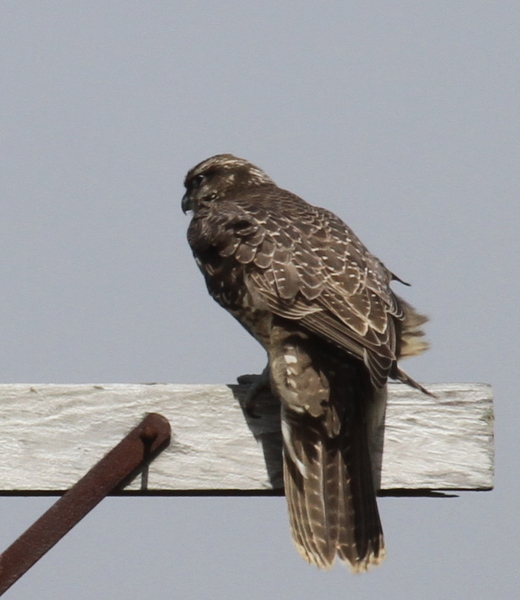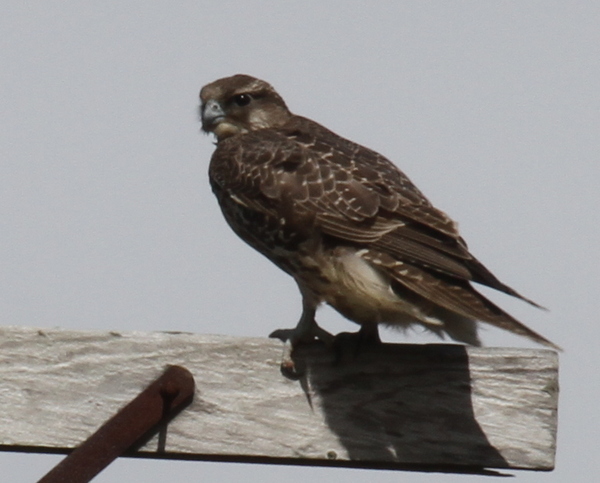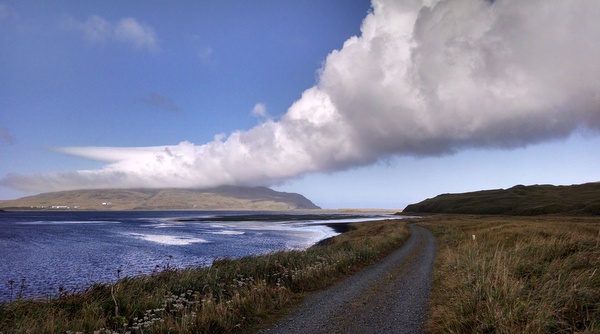A nice way to end the week.
Temp in the 50s, mostly cloudy, occasional rain, mostly sunny in the afternoon, 10-20 mph NW wind.
The lighting on Lake Shirley is backlit except in the early morning. So in order to better scan the waterfowl there, we decided to head straight there this morning. Upon arrival, the lighting was better. We scanned the flock and found the two male Tufted Ducks. We were looking to see if there were any females lurking in there — there weren’t.

Tufted Ducks (fourth from the left and second from the right) with Greater Scaup, Lake Shirley, Sept 18, 2014.
Upon returning to the seawall, a quick scan of the horizon revealed shearwaters passing by as usual, but also a surprising number of Laysan Albatross. We were seeing two or three at a time! We probably counted a couple dozen! In the past, if we saw one or two from shore, we thought we were doing pretty well, so this was really a treat.
When we got back to town, the heavens opened up with a heavy rain. We birded the area as best we could — checking feeders, etc., and then headed back north. As we approached Clam Lagoon, we saw that it was sunny out towards the Loran Station, so since we had so many albatross at the seawall, we thought it might be a good idea to try up there.
Part way out the road to Loran, a Gyrfalcon flushed from the side of the road and cooperatively perched on a nearby utility pole.
Out at the Loran Station, the seabirds were less than overwhelming, but there were shearwaters flying by (although not close) and Frank got a good view of a Fulmar through the Questar.
We returned to Clam Lagoon, drove around to the seawall and found the Horned Grebes and Red-necked Grebes had returned (or never left).
At Lake Shirley, the waterfowl flock was joined by four Northern Pintail — I told you they should be here.
As we were driving back up the east side of Clam Lagoon, Mount Adagdak created an interesting cloud formation.
This brings our trip list to 52, which is the average for our September trips — with a week to go.



